Showing 85–96 of 196 results
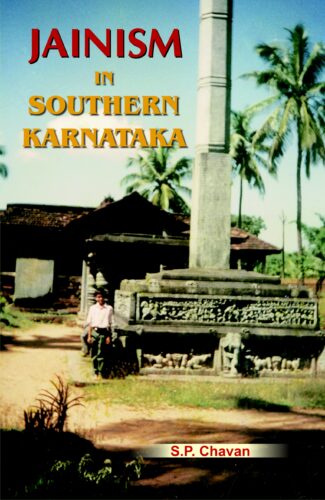
An account of development of Janism in southern Karnataka, by examining inscriptions, historical monuments and literary works of the time. It discusses the physiography and formation of modern Karnataka, to under stand the spread of Jainism as a religion and philosophy and its influence on the social and political life of the people.
The book is on the development of Jainism in southern Karnataka from the time of its emergence in the region after the fourth century ad to ad 1565. Examining numerous inscriptions and literary works of the time, studying Jain historical monuments, it reconstructs the stages of development of Jainism concentrating on the rise and development of centres of Jainism like Sravanbelagola and Humcha which became the capital of Santara dynasty and a sacred place associated with Goddess Padmavati, and Jain centres in South Kanara district like Karkala, Moodabidri and Venur. It examines the contributions of Bhattarakas, religious rulers who were also erudite Jain scholars who protected the Jain sacred literature and promoted the course of Jainism in the region generally from the eighth century onwards. It also includes a discussion of physiography and formation of modern Karnataka to understand the way the Jain centres played a vital role in the spread of Jainism. It presents a detailed account of Jainism as a religion and philosophy, the message of Mahavira and the cardinal principles of Jainism, role of tirthankaras in Jainism, and founding of Jainism by rulers in north India. Referring to erection of Jain temples and installation of Jain sculptures, it deals with the contributions of Jain religious scholars to development of Jainism and the influence of Jainism on social and political life of the people.
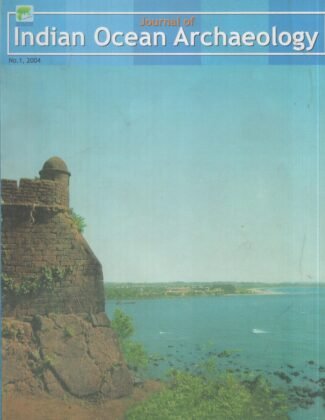
This Journal embodies the results of explorations and excavations conducted by scholars in various countries which witnessed the growth of the personality of the shared culture of the Indian Ocean Rim countries, including the countries of Southwest Asia. It also includes all aspects of cultural, economic and socio-political histories of these countries.
Journal of Indian Ocean Archaeology was launched in 2003 by one of Indias leading academic institutions, the Centre for Research & Training in History, Archaeology and Palaeo-environment, New Delhi. The second issue is in the Press. The Journal is an outcome of the realization on the part of the international community of archaeologists and historians that India has no journal devoted exclusively to the archaeology of the Indian Ocean Rim countries, starting from the Red Sea through the South China Sea, although Indian occupies the central position in this vast area, with three-fourths of its land facing the gulfs and bays of the Indian Ocean. It is common knowledge that Egypt, Ethiopis, Kenya, Arabia, Yemen, Oman, Bahrain and countries bordering the Persian Gulf, including Iraq and Iran, as well as Pakistan, Sri Lanka, Myanmar, Thailand, Cambodia, Indonesia, Malaysia, China, were closely connected with each other through long-distance sea-borne trade-routes for thousands of years. This particular phenomenon had led to the development of what is now generally called Shared Culture with its distinct personality which is Afro-Asian. It is reflected in the material items dug up every year at a number of sites in India and all other countries along the coasts of the Indian Ocean. This journal embodies the results of explorations and excavations conducted by scholars in various countries which witnessed the growth of the personality of the shared culture of the Indian Ocean Rim countries, including the countries of Southwest Asia. It also includes all aspects of cultural, economic and socio-political histories of these countries. The contributors to this journal are from all over the world. It is a MUST for every scholar and layman interested in the history and arachaeology of the coastal countries of the Indian Ocean, from Africa, and West Asia through China.

This Journal embodies the results of explorations and excavations conducted by scholars in various countries which witnessed the growth of the personality of the shared culture of the Indian Ocean Rim countries, including the countries of Southwest Asia. It also includes all aspects of cultural, economic and socio-political histories of these countries.
Journal of Indian Ocean Archaeology was launched in 2003 by one of Indias leading academic institutions, the Centre for Research & Training in History, Archaeology and Palaeo-environment, New Delhi. The second issue is in the Press. The Journal is an outcome of the realization on the part of the international community of archaeologists and historians that India has no journal devoted exclusively to the archaeology of the Indian Ocean Rim countries, starting from the Red Sea through the South China Sea, although Indian occupies the central position in this vast area, with three-fourths of its land facing the gulfs and bays of the Indian Ocean. It is common knowledge that Egypt, Ethiopis, Kenya, Arabia, Yemen, Oman, Bahrain and countries bordering the Persian Gulf, including Iraq and Iran, as well as Pakistan, Sri Lanka, Myanmar, Thailand, Cambodia, Indonesia, Malaysia, China, were closely connected with each other through long-distance sea-borne trade-routes for thousands of years. This particular phenomenon had led to the development of what is now generally called Shared Culture with its distinct personality which is Afro-Asian. It is reflected in the material items dug up every year at a number of sites in India and all other countries along the coasts of the Indian Ocean. This journal embodies the results of explorations and excavations conducted by scholars in various countries which witnessed the growth of the personality of the shared culture of the Indian Ocean Rim countries, including the countries of Southwest Asia. It also includes all aspects of cultural, economic and socio-political histories of these countries. The contributors to this journal are from all over the world. It is a MUST for every scholar and layman interested in the history and arachaeology of the coastal countries of the Indian Ocean, from Africa, and West Asia through China.

This Journal embodies the results of explorations and excavations conducted by scholars in various countries which witnessed the growth of the personality of the shared culture of the Indian Ocean Rim countries, including the countries of Southwest Asia. It also includes all aspects of cultural, economic and socio-political histories of these countries.
Journal of Indian Ocean Archaeology was launched in 2003 by one of Indias leading academic institutions, the Centre for Research & Training in History, Archaeology and Palaeo-environment, New Delhi. The second issue is in the Press. The Journal is an outcome of the realization on the part of the international community of archaeologists and historians that India has no journal devoted exclusively to the archaeology of the Indian Ocean Rim countries, starting from the Red Sea through the South China Sea, although Indian occupies the central position in this vast area, with three-fourths of its land facing the gulfs and bays of the Indian Ocean. It is common knowledge that Egypt, Ethiopis, Kenya, Arabia, Yemen, Oman, Bahrain and countries bordering the Persian Gulf, including Iraq and Iran, as well as Pakistan, Sri Lanka, Myanmar, Thailand, Cambodia, Indonesia, Malaysia, China, were closely connected with each other through long-distance sea-borne trade-routes for thousands of years. This particular phenomenon had led to the development of what is now generally called Shared Culture with its distinct personality which is Afro-Asian. It is reflected in the material items dug up every year at a number of sites in India and all other countries along the coasts of the Indian Ocean. This journal embodies the results of explorations and excavations conducted by scholars in various countries which witnessed the growth of the personality of the shared culture of the Indian Ocean Rim countries, including the countries of Southwest Asia. It also includes all aspects of cultural, economic and socio-political histories of these countries. The contributors to this journal are from all over the world. It is a MUST for every scholar and layman interested in the history and arachaeology of the coastal countries of the Indian Ocean, from Africa, and West Asia through China.
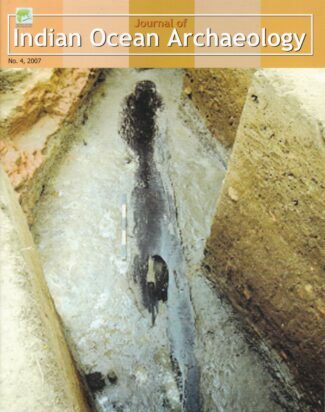
This Journal embodies the results of explorations and excavations conducted by scholars in various countries which witnessed the growth of the personality of the shared culture of the Indian Ocean Rim countries, including the countries of Southwest Asia. It also includes all aspects of cultural, economic and socio-political histories of these countries.
Journal of Indian Ocean Archaeology was launched in 2003 by one of Indias leading academic institutions, the Centre for Research & Training in History, Archaeology and Palaeo-environment, New Delhi. The second issue is in the Press. The Journal is an outcome of the realization on the part of the international community of archaeologists and historians that India has no journal devoted exclusively to the archaeology of the Indian Ocean Rim countries, starting from the Red Sea through the South China Sea, although Indian occupies the central position in this vast area, with three-fourths of its land facing the gulfs and bays of the Indian Ocean. It is common knowledge that Egypt, Ethiopis, Kenya, Arabia, Yemen, Oman, Bahrain and countries bordering the Persian Gulf, including Iraq and Iran, as well as Pakistan, Sri Lanka, Myanmar, Thailand, Cambodia, Indonesia, Malaysia, China, were closely connected with each other through long-distance sea-borne trade-routes for thousands of years. This particular phenomenon had led to the development of what is now generally called Shared Culture with its distinct personality which is Afro-Asian. It is reflected in the material items dug up every year at a number of sites in India and all other countries along the coasts of the Indian Ocean. This journal embodies the results of explorations and excavations conducted by scholars in various countries which witnessed the growth of the personality of the shared culture of the Indian Ocean Rim countries, including the countries of Southwest Asia. It also includes all aspects of cultural, economic and socio-political histories of these countries. The contributors to this journal are from all over the world. It is a MUST for every scholar and layman interested in the history and arachaeology of the coastal countries of the Indian Ocean, from Africa, and West Asia through China.
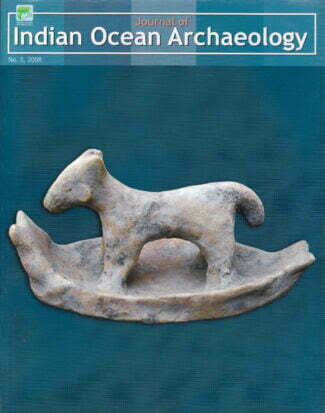
This Journal embodies the results of explorations and excavations conducted by scholars in various countries which witnessed the growth of the personality of the shared culture of the Indian Ocean Rim countries, including the countries of Southwest Asia. It also includes all aspects of cultural, economic and socio-political histories of these countries.
Journal of Indian Ocean Archaeology was launched in 2003 by one of Indias leading academic institutions, the Centre for Research & Training in History, Archaeology and Palaeo-environment, New Delhi. The second issue is in the Press. The Journal is an outcome of the realization on the part of the international community of archaeologists and historians that India has no journal devoted exclusively to the archaeology of the Indian Ocean Rim countries, starting from the Red Sea through the South China Sea, although Indian occupies the central position in this vast area, with three-fourths of its land facing the gulfs and bays of the Indian Ocean. It is common knowledge that Egypt, Ethiopis, Kenya, Arabia, Yemen, Oman, Bahrain and countries bordering the Persian Gulf, including Iraq and Iran, as well as Pakistan, Sri Lanka, Myanmar, Thailand, Cambodia, Indonesia, Malaysia, China, were closely connected with each other through long-distance sea-borne trade-routes for thousands of years. This particular phenomenon had led to the development of what is now generally called Shared Culture with its distinct personality which is Afro-Asian. It is reflected in the material items dug up every year at a number of sites in India and all other countries along the coasts of the Indian Ocean. This journal embodies the results of explorations and excavations conducted by scholars in various countries which witnessed the growth of the personality of the shared culture of the Indian Ocean Rim countries, including the countries of Southwest Asia. It also includes all aspects of cultural, economic and socio-political histories of these countries. The contributors to this journal are from all over the world. It is a MUST for every scholar and layman interested in the history and arachaeology of the coastal countries of the Indian Ocean, from Africa, and West Asia through China.
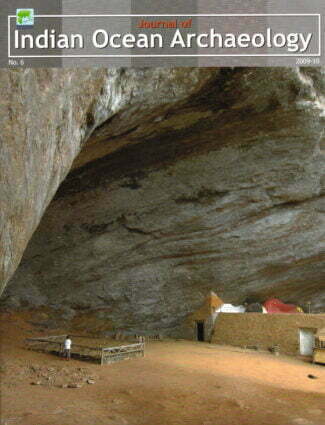
This Journal embodies the results of explorations and excavations conducted by scholars in various countries which witnessed the growth of the personality of the shared culture of the Indian Ocean Rim countries, including the countries of Southwest Asia. It also includes all aspects of cultural, economic and socio-political histories of these countries.
Journal of Indian Ocean Archaeology was launched in 2003 by one of Indias leading academic institutions, the Centre for Research & Training in History, Archaeology and Palaeo-environment, New Delhi. The second issue is in the Press. The Journal is an outcome of the realization on the part of the international community of archaeologists and historians that India has no journal devoted exclusively to the archaeology of the Indian Ocean Rim countries, starting from the Red Sea through the South China Sea, although Indian occupies the central position in this vast area, with three-fourths of its land facing the gulfs and bays of the Indian Ocean. It is common knowledge that Egypt, Ethiopis, Kenya, Arabia, Yemen, Oman, Bahrain and countries bordering the Persian Gulf, including Iraq and Iran, as well as Pakistan, Sri Lanka, Myanmar, Thailand, Cambodia, Indonesia, Malaysia, China, were closely connected with each other through long-distance sea-borne trade-routes for thousands of years. This particular phenomenon had led to the development of what is now generally called Shared Culture with its distinct personality which is Afro-Asian. It is reflected in the material items dug up every year at a number of sites in India and all other countries along the coasts of the Indian Ocean. This journal embodies the results of explorations and excavations conducted by scholars in various countries which witnessed the growth of the personality of the shared culture of the Indian Ocean Rim countries, including the countries of Southwest Asia. It also includes all aspects of cultural, economic and socio-political histories of these countries. The contributors to this journal are from all over the world. It is a MUST for every scholar and layman interested in the history and arachaeology of the coastal countries of the Indian Ocean, from Africa, and West Asia through China.
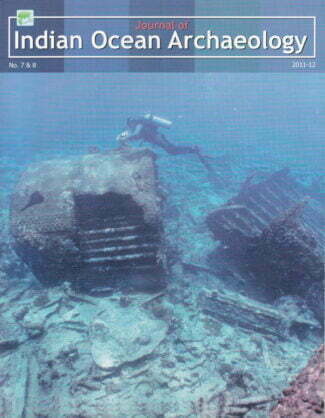
This Journal embodies the results of explorations and excavations conducted by scholars in various countries which witnessed the growth of the personality of the shared culture of the Indian Ocean Rim countries, including the countries of Southwest Asia. It also includes all aspects of cultural, economic and socio-political histories of these countries.
Journal of Indian Ocean Archaeology was launched in 2003 by one of Indias leading academic institutions, the Centre for Research & Training in History, Archaeology and Palaeo-environment, New Delhi. The second issue is in the Press. The Journal is an outcome of the realization on the part of the international community of archaeologists and historians that India has no journal devoted exclusively to the archaeology of the Indian Ocean Rim countries, starting from the Red Sea through the South China Sea, although Indian occupies the central position in this vast area, with three-fourths of its land facing the gulfs and bays of the Indian Ocean. It is common knowledge that Egypt, Ethiopis, Kenya, Arabia, Yemen, Oman, Bahrain and countries bordering the Persian Gulf, including Iraq and Iran, as well as Pakistan, Sri Lanka, Myanmar, Thailand, Cambodia, Indonesia, Malaysia, China, were closely connected with each other through long-distance sea-borne trade-routes for thousands of years. This particular phenomenon had led to the development of what is now generally called Shared Culture with its distinct personality which is Afro-Asian. It is reflected in the material items dug up every year at a number of sites in India and all other countries along the coasts of the Indian Ocean. This journal embodies the results of explorations and excavations conducted by scholars in various countries which witnessed the growth of the personality of the shared culture of the Indian Ocean Rim countries, including the countries of Southwest Asia. It also includes all aspects of cultural, economic and socio-political histories of these countries. The contributors to this journal are from all over the world. It is a MUST for every scholar and layman interested in the history and arachaeology of the coastal countries of the Indian Ocean, from Africa, and West Asia through China.

Journal of Indian Ocean Archaeology was launched in 2003 by one of Indias leading academic institutions, the Centre for Research & Training in History, Archaeology and Palaeo-environment, New Delhi. The second issue is in the Press. The Journal is an outcome of the realization on the part of the international community of archaeologists and historians that India has no journal devoted exclusively to the archaeology of the Indian Ocean Rim countries, starting from the Red Sea through the South China Sea, although Indian occupies the central position in this vast area, with three-fourths of its land facing the gulfs and bays of the Indian Ocean. It is common knowledge that Egypt, Ethiopis, Kenya, Arabia, Yemen, Oman, Bahrain and countries bordering the Persian Gulf, including Iraq and Iran, as well as Pakistan, Sri Lanka, Myanmar, Thailand, Cambodia, Indonesia, Malaysia, China, were closely connected with each other through long-distance sea-borne trade-routes for thousands of years. This particular phenomenon had led to the development of what is now generally called Shared Culture with its distinct personality which is Afro-Asian. It is reflected in the material items dug up every year at a number of sites in India and all other countries along the coasts of the Indian Ocean. This journal embodies the results of explorations and excavations conducted by scholars in various countries which witnessed the growth of the personality of the shared culture of the Indian Ocean Rim countries, including the countries of Southwest Asia. It also includes all aspects of cultural, economic and socio-political histories of these countries. The contributors to this journal are from all over the world. It is a MUST for every scholar and layman interested in the history and arachaeology of the coastal countries of the Indian Ocean, from Africa, and West Asia through China.
Journal of Indian Ocean Archaeology was launched in 2003 by one of Indias leading academic institutions, the Centre for Research & Training in History, Archaeology and Palaeo-environment, New Delhi. The second issue is in the Press. The Journal is an outcome of the realization on the part of the international community of archaeologists and historians that India has no journal devoted exclusively to the archaeology of the Indian Ocean Rim countries, starting from the Red Sea through the South China Sea, although Indian occupies the central position in this vast area, with three-fourths of its land facing the gulfs and bays of the Indian Ocean. It is common knowledge that Egypt, Ethiopis, Kenya, Arabia, Yemen, Oman, Bahrain and countries bordering the Persian Gulf, including Iraq and Iran, as well as Pakistan, Sri Lanka, Myanmar, Thailand, Cambodia, Indonesia, Malaysia, China, were closely connected with each other through long-distance sea-borne trade-routes for thousands of years. This particular phenomenon had led to the development of what is now generally called Shared Culture with its distinct personality which is Afro-Asian. It is reflected in the material items dug up every year at a number of sites in India and all other countries along the coasts of the Indian Ocean. This journal embodies the results of explorations and excavations conducted by scholars in various countries which witnessed the growth of the personality of the shared culture of the Indian Ocean Rim countries, including the countries of Southwest Asia. It also includes all aspects of cultural, economic and socio-political histories of these countries. The contributors to this journal are from all over the world. It is a MUST for every scholar and layman interested in the history and arachaeology of the coastal countries of the Indian Ocean, from Africa, and West Asia through China.

This Journal embodies the results of explorations and excavations conducted by scholars in various countries which witnessed the growth of the personality of the shared culture of the Indian Ocean Rim countries, including the countries of Southwest Asia. It also includes all aspects of cultural, economic and socio-political histories of these countries.
Journal of Indian Ocean Archaeology was launched in 2003 by one of Indias leading academic institutions, the Centre for Research & Training in History, Archaeology and Palaeo-environment, New Delhi. The second issue is in the Press. The Journal is an outcome of the realization on the part of the international community of archaeologists and historians that India has no journal devoted exclusively to the archaeology of the Indian Ocean Rim countries, starting from the Red Sea through the South China Sea, although Indian occupies the central position in this vast area, with three-fourths of its land facing the gulfs and bays of the Indian Ocean. It is common knowledge that Egypt, Ethiopis, Kenya, Arabia, Yemen, Oman, Bahrain and countries bordering the Persian Gulf, including Iraq and Iran, as well as Pakistan, Sri Lanka, Myanmar, Thailand, Cambodia, Indonesia, Malaysia, China, were closely connected with each other through long-distance sea-borne trade-routes for thousands of years. This particular phenomenon had led to the development of what is now generally called Shared Culture with its distinct personality which is Afro-Asian. It is reflected in the material items dug up every year at a number of sites in India and all other countries along the coasts of the Indian Ocean. This journal embodies the results of explorations and excavations conducted by scholars in various countries which witnessed the growth of the personality of the shared culture of the Indian Ocean Rim countries, including the countries of Southwest Asia. It also includes all aspects of cultural, economic and socio-political histories of these countries. The contributors to this journal are from all over the world. It is a MUST for every scholar and layman interested in the history and arachaeology of the coastal countries of the Indian Ocean, from Africa, and West Asia through China.
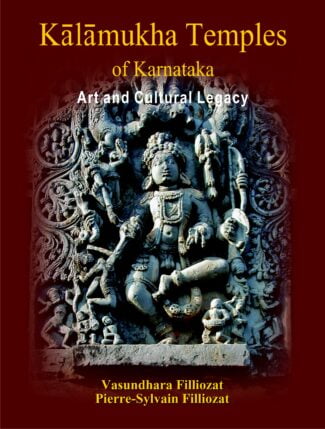
The Book mainly deals with the historical importance of the Kalamukha movement in Karnataka and the existence of an exceptional school of arts which flourished under Kalamukha patronage, describing Somanatha temple at Haralahalli and the Kadambeshvara temple at Rattihalli with their architecture, iconography, epigraphy and religious and cultural background.
The Kalamukha temples in Karnataka are associated with the Lakulashaiva movement especially the beliefs and practices of the Kalamukha Shaivites and the jakkanacari style of temples in Karnataka. This volume is a study of two of the best examples of Kalamukha shrines in the region. It focuses on the Somanatheshvara temple at Haralahalli and Kadambeshvara temple at Rattihalli, splendid examples of conversion of single-cell shrines into triple sancta. With numrous illustrations of the temples including their plans and sculptures and referring to and quoting from the Agamas, the Puranas and other ancient works, it studies the architecture of the temples along with their history, the general plans of the temples, their interior including pillars, lintel and entrances, their external structure, and their iconography, particularly the main deities in the temples. It makes a unique effort to study the inscriptions associated with the temples which are in Kannada interlaced with Sanskrit verses and containing Sanskrit words, presenting their Roman transliteration and translation into English. The inscriptions include one on renovation of Someshvara temple by King Joma (ce 1181), one on the foundation of a temple of Daseshvara laid by Dasiraja (ce 1188) and one that eulogises the Kadambas and minister Soma (ce 1144).
The volume, with extensive notes that explain terms in a simple manner, will prove invaluable to scholars and students of Indology, especially those interested in early medieval religion, culture and architecture in South India.
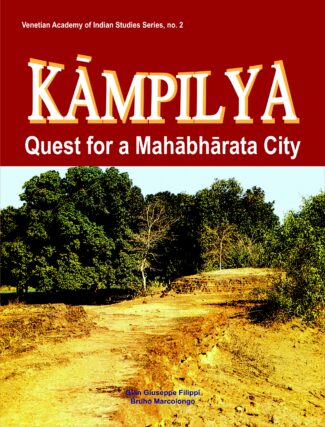
The research findings of archaeological and socio-ethnological nature studying geomorphological/environmental influence on historical settlements explore the possible identity of Drupad-Kila complex near Kampil village with Kampilya city of Mahabharata fame.
Kampil (Farrukhabad District, U.P.) is a typical Indian village in the fertile terrain of the Ganga-Yamuna Doab. Known for its long, glorious past, the village has, since A. Cunninghams visit here in 1878, compelled increasing attention of the archaeologists seeking to explore its possible identity with Kampilya the city, described in the Mahabharata story, as the fabulous capital of Drupads south Pancala kingdom. The question of Kampil-Kampilya identity was examined afresh by a multidisciplinary research team, on the basis of lRS Satellite multispectral images of the mid -Ganga plain, a predictive geo-archaeological model, and field surveys. Which, in trun, led researchers to the discovery of a complex of ruins: the remains of a fortified structure, locally called Drupad Kila about five kilometers upstream of the Kampil village. Set out here are the preliminary findings of this multidisciplinary research, including (a) a study of the late Holocene palaeo-hydographic evolution of Doab region around Drupad Kila site and the influence of geomorphology/environmental resources on the human historical settlements; (b) an archaeological report, based on the surface survey of the discovered site; and (c) a socio-ethnological study of the villages around the Kila complex. Carried out during 1996-98, these studies: each contributed by the area specialist (s) of the research team, addressed specifically the question whether the Drupad-Kila complex answers to the description of Mahabharata city of Kampilya. Visualizing the manifold importance of Kampilya beyond just the archaeological event, the editors have created a holistic Kampilya Project to retrieve the cultural and environmental potentialities of the Drupad-Kila complex and its peripheral areas.
| There are no products |